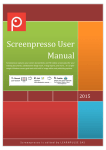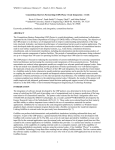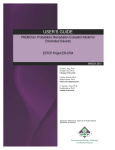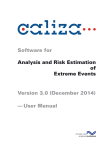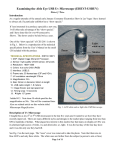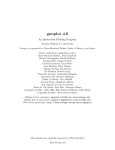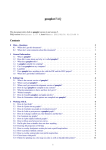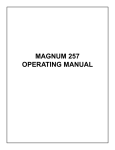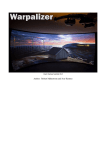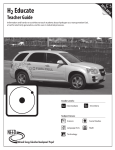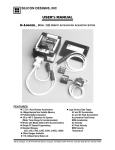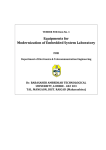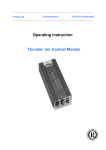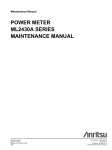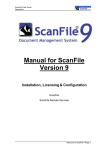Download CBP CBP CBP CBP CBP CBP CBP CBP CBP CBP CBP CBP CBP
Transcript
Task 7 DemonsTraTion of sTaDium® for The PerformanCe assessmenT of ConCreTe low aCTiviTy wasTe sTorage sTruCTures Cementitious Barriers Partnership ENERGY National Institute of Standards and Technology CBP-Tr-2010-007-C3, revision 0 U.S. DEPARTMENT OF CBP CBP CBP CBP CBP CBP CBP CBP CBP CBP CBP CBP CBP CBP CBP CBP CBP CBP CBP CBP CBP CBP CBP CBP CBP CBP CBP CBP CBP CBP CBP CBP CBP CBP CBP CBP CBP CBP CBP CBP SOFTWARE TOOLBOX, VERSION 1.0 INSTALLATION GUIDE Cementitious Barriers Partnership August 2012 CBP-TR-2012-009-2, rev. 0 CBP Phase I Code Integration CBP SOFTWARE TOOLBOX, VERSION 1.0 INSTALLATION GUIDE Kevin G. Brown Vanderbilt University, School of Engineering Consortium for Risk Evaluation with Stakeholder Participation III Nashville, TN 37235 Gregory P. Flach and Frank G. Smith, III Savannah River National Laboratory Aiken, SC 29808 August 2012 CBP-TR-2012-009-2, Rev. 0 CBP Software ToolBox, Version 1.0 Installation Guide ACKNOWLEDGEMENTS This report was prepared for the United States Department of Energy in part under Contract No. DE-AC0908SR22470 and is an account of work performed in part under that contract. Reference herein to any specific commercial product, process, or service by trademark, name, manufacturer, or otherwise does not necessarily constitute or imply endorsement, recommendation, or favoring of same by Savannah River Nuclear Solutions or by the United States Government or any agency thereof. The views and opinions of the authors expressed herein do not necessarily state or reflect those of the United States Government or any agency thereof. and This report is based on work supported by the U. S. Department of Energy, under Cooperative Agreement Number DE-FC01-06EW07053 entitled ‘The Consortium for Risk Evaluation with Stakeholder Participation III’ awarded to Vanderbilt University. The opinions, findings, conclusions, or recommendations expressed herein are those of the author(s) and do not necessarily represent the views of the U.S. Department of Energy or Vanderbilt University. DISCLAIMER This work was prepared under an agreement with and funded by the U. S. Government. Neither the U.S. Government or its employees, nor any of its contractors, subcontractors or their employees, makes any express or implied: 1. warranty or assumes any legal liability for the accuracy, completeness, or for the use or results of such use of any information, product, or process disclosed; or 2. representation that such use or results of such use would not infringe privately owned rights; or 3. endorsement or recommendation of any specifically identified commercial product, process, or service. Any views and opinions of authors expressed in this work do not necessarily state or reflect those of the United States Government, or its contractors, or subcontractors. Printed in the United States of America United States Department of Energy Office of Environmental Management Washington, DC CBP Software ToolBox, Version 1.0 Installation Guide FOREWORD The Cementitious Barriers Partnership (CBP) Project is a multi-disciplinary, multi-institutional collaboration supported by the United States Department of Energy (US DOE) Office of Tank Waste Management. The objective of the CBP project is to develop a set of tools to improve understanding and prediction of the longterm structural, hydraulic, and chemical performance of cementitious barriers used in nuclear applications. A multi-disciplinary partnership of federal, academic, private sector, and international expertise has been formed to accomplish the project objective. In addition to the US DOE, the CBP partners are the Savannah River National Laboratory (SRNL), Vanderbilt University (VU) / Consortium for Risk Evaluation with Stakeholder Participation (CRESP), Energy Research Center of the Netherlands (ECN), and SIMCO Technologies, Inc. The Nuclear Regulatory Commission (NRC) is providing support under a Memorandum of Understanding. The National Institute of Standards and Technology (NIST) is providing research under an Interagency Agreement. Neither the NRC nor NIST are signatories to the Cooperative Research and Development Agreement (CRADA). The periods of cementitious performance being evaluated are up to or longer than 100 years for operating facilities and longer than 1,000 years for waste management. The set of simulation tools and data developed under this project will be used to evaluate and predict the behavior of cementitious barriers used in nearsurface engineered waste disposal systems, e.g., waste forms, containment structures, entombments, and environmental remediation, including decontamination and decommissioning analysis of structural concrete components of nuclear facilities (spent-fuel pools, dry spent-fuel storage units, and recycling facilities such as fuel fabrication, separations processes). Simulation parameters will be obtained from prior literature and will be experimentally measured under this project, as necessary, to demonstrate application of the simulation tools for three prototype applications (waste form in concrete vault, high-level waste tank grouting, and spent-fuel pool). Test methods and data needs to support use of the simulation tools for future applications will be defined. The CBP project is a five-year effort focused on reducing the uncertainties of current methodologies for assessing cementitious barrier performance and increasing the consistency and transparency of the assessment process. The results of this project will enable improved risk-informed, performance-based decision-making and support several of the strategic initiatives in the DOE Office of Environmental Management Engineering & Technology Roadmap. Those strategic initiatives include 1) enhanced tank closure processes; 2) enhanced stabilization technologies; 3) advanced predictive capabilities; 4) enhanced remediation methods; 5) adapted technologies for site-specific and complex-wide Decontamination and Decommissioning (D&D) applications; 6) improved Spent Nuclear Fuel (SNF) storage, stabilization and disposal preparation; 7) enhanced storage, monitoring and stabilization systems; and 8) enhanced long-term performance evaluation and monitoring. Christine A. Langton, PhD Savannah River National Laboratory David S. Kosson, PhD Vanderbilt University / CRESP iii CBP Software ToolBox, Version 1.0 Installation Guide TABLE OF CONTENTS Acknowledgements ............................................................................................................................................. ii Disclaimer ............................................................................................................................................................ ii Foreword ............................................................................................................................................................iii Executive Summary ........................................................................................................................................... iv List of Figures .................................................................................................................................................... vi List of Tables ...................................................................................................................................................... vi List of Acronyms and Abbreviations .............................................................................................................. vii 1 Introduction .................................................................................................................................................. 1 2 What Do You Need to Get Started? ........................................................................................................... 3 2.1 System Requirements .......................................................................................................................... 3 2.2 What is Included in the CBP Software ToolBox? ............................................................................... 3 2.3 How to Register for the CBP Software ToolBox ................................................................................ 4 2.3.1 2.4 Obtaining the NetBIOS name for a host computer .............................................................. 4 How to Download the CBP Software ToolBox Software? ................................................................. 5 3 Installing the CBP Software ToolBox ........................................................................................................ 6 3.1 Create a Project Space......................................................................................................................... 6 3.2 Installing the GoldSim Player (Required) ........................................................................................... 7 3.3 Installing the STADIUM® Runtime Executable ................................................................................ 8 3.3.1 What if the STADIUM® executable is NOT named “stadium_win_v2011e.exe”? ............ 9 3.4 Installing Windows Dynamic-link Libraries (Required by STADIUM®)........................................ 10 3.5 Installing LeachXS™/ORCHESTRA ............................................................................................... 10 3.6 JavaRE or the Java Runtime Environment (Required for LeachXS™/ORCHESTRA) ................... 13 3.7 GNUPlot (Optional) .......................................................................................................................... 14 4 Setting System Options after Installation ................................................................................................ 15 4.1 Configuring Windows to View the GoldSim Dashboard (Suggested) .............................................. 15 4.2 Setting Program Preferences (Program Shortcuts)............................................................................ 15 5 Preparing a New Simulation Workspace ................................................................................................. 18 6 Technical Support ...................................................................................................................................... 21 7 Glossary of Terms ...................................................................................................................................... 22 8 Index ............................................................................................................................................................ 24 9 References ................................................................................................................................................... 25 iv CBP Software ToolBox, Version 1.0 Installation Guide LIST OF FIGURES Figure 2-1. Getting the Computer’s NetBIOS name using getNetBIOScomputerNameA.exe ............................ 5 Figure 3-1. The CBPsoftwareToolbox Installers Folder ...................................................................................... 7 Figure 3-2. The GoldSim Player Installation Wizard ........................................................................................... 7 Figure 3-3. The GoldSim Player (GTG 2010a) .................................................................................................... 8 Figure 3-4. The STADIUM Folder in the ToolBox Codes folder ........................................................................ 9 Figure 3-5. Revised STADIUMexecutableName.txt file ................................................................................... 10 Figure 3-6. The LeachXS Lite Setup Wizard ..................................................................................................... 11 Figure 3-7. The LeachXS™/ORCHESTRA Login Screen ................................................................................ 12 Figure 3-8. The LeachXS™/ORCHESTRA Program including Advanced Modeling Capabilities .................. 13 Figure 4-1. The Windows 7 Display Control Panel ........................................................................................... 15 Figure 4-2. Example of Editing the ToolBox Shortcut for MyTextEditor ......................................................... 17 Figure 5-1. The CBP Software ToolBox and GoldSim Run Controller ............................................................. 20 v CBP Software ToolBox, Version 1.0 Installation Guide LIST OF ACRONYMS AND ABBREVIATIONS CBP Cementitious Barriers Partnership CPU central processing unit CRESP Consortium for Risk Evaluation with Stakeholder Participation D&D Decontamination and Decommissioning DLL Dynamic-link library DOE Department of Energy ECN Energy Research Centre of the Netherlands GTG GoldSim Technology Group GUI Graphical User Interface LeachXS™ Leaching eXpert System LXO LeachXS™/ORCHESTRA NIST National Institute of Standards and Technology NRC Nuclear Regulatory Commission ORCHESTRA Objects Representing CHEmical Speciation and TRAnsport SNF Spent Nuclear Fuel SRNL Savannah River National Laboratory SRS Savannah River Site STADIUM® Software for Transport and Degradation in Unsaturated Materials THAMES Thermodynamic Hydration And Microstructure Evolution Simulator URL uniform resource locator vi CBP Software ToolBox, Version 1.0 Installation Guide Kevin G. Brown Vanderbilt University, School of Engineering Consortium for Risk Evaluation with Stakeholder Participation III Nashville, TN 37235 Gregory P. Flach and Frank G. Smith, III Savannah River National Laboratory Aiken, SC 29808 1 INTRODUCTION The Cementitious Barriers Partnership (CBP) has developed the CBP Software ToolBox, an integrated suite of software tools, to predict the structural, hydraulic, and chemical performance of cement barriers used in nuclear applications over extended time frames. The ToolBox can be used to evaluate the behavior of cementitious barriers used in near surface engineered waste disposal systems including waste forms, containment structures, entombments, and environmental remediation. Cementitious materials can be exposed to various dynamic environmental conditions that cause changes in material properties including: (i) sulfate attack, (ii) carbonation, (iii) oxidation and (iv) primary constituent leaching. Two state-of-the-art software tools were selected as a starting point to capture the important phenomena: LeachXS™/ORCHESTRA developed by the Energy Research Centre of the Netherlands (ECN) (ECN 2007, Meeussen 2003) and STADIUM® developed by SIMCO Technologies, Inc. (SIMCO 2008). The GoldSim Monte Carlo simulation program (GTG 2010b, GTG 2010c) was chosen as the code integration platform to allow LeachXS™/ORCHESTRA and STADIUM® to be run probabilistically for a set of important, pre-defined degradation scenarios (Brown & Flach 2009). A GoldSim “Player” version allows running but not editing GoldSim models (GTG 2010a). A general Dynamic-link Library (DLL) interface was developed by the CBP that links GoldSim with the partner codes (Smith III et al. 2010). For each realization, the DLL uses an instructions file that controls creating the appropriate input file for the external application, runs the external code, and returns a list of outputs (read from files created by the external application) back to the GoldSim model. This user guide describes use of the CBP Software ToolBox in detail and discusses the following topics: What do you need to get started? Installing the CBP Software ToolBox 1 CBP Software ToolBox, Version 1.0 Installation Guide 2 Setting System Options after installation Preparing a new simulation workspace for the Software ToolBox CBP Software ToolBox, Version 1.0 Installation Guide 2 WHAT DO YOU NEED TO GET STARTED? The CBP Software ToolBox is an integrated system that allows state-of-the-art partner codes (namely, STADIUM® and LeachXS™/ORCHESTRA) to be evaluated using a GoldSim probabilistic framework. This section describes the requirements of the system needed to run the CBP Software ToolBox, the components of the ToolBox, and how to register and download the ToolBox. 2.1 System Requirements A system running the CBP Software Toolbox must meet the following requirements: Desktop personal computer or laptop running Windows XP, Vista or 7 Administrative Privileges on the system during the installation process Installation of Microsoft Visual C++ Redistributable (MSVCR100.DLL and VCOMP100) is required to run STADIUM® as described in Section 3.4 CPU 1.6 GHz or higher (multicore processor such as Intel Core i7-2600 with 4GB at 3.40GHz is recommended) For XP machines, 512 MB of RAM required (1 GB or more recommended). For Vista and Windows 7 machines, 1 GB of RAM required (2 GB or more recommended). 16-bit color depth (32-bit recommended) Internet connection for software download (broadband connection preferred) Microsoft Internet Explorer 5.5 or higher Because GoldSim is linked to Microsoft Excel in the ToolBox, Microsoft Windows Excel 2003 or later is required. Disk Space required: 200 MB of free space in the target download directory and 40 MB of free space in Common Files folder. During the installation a minimum of 250 MB is required. Up to 1GB of disk space or more may be required for repeated simulation of new models. Mouse, touchpad, or other pointing device 2.2 What is Included in the CBP Software ToolBox? The CBP Software ToolBox consists of: A GoldSim model (in this instance saved in a GoldSim Player file, CBPsoftwareToolbox.gsp) including a series of Dashboards and external interface elements that control partner code evaluation (GTG 2010b). A CBP custom Dynamic-link Library (DLL) that is called from the GoldSim external interface element to link to the selected CBP partner code (Smith III et al. 2010). CBP partner codes including 3 CBP Software ToolBox, Version 1.0 Installation Guide o LeachXS™/ORCHESTRA – LeachXS™ is a database coupled with an expert system for material characterization and environmental impact assessment based on estimated contaminant release rates derived from leaching tests. Geochemical speciation and chemical reaction/transport modeling capabilities are integrated into LeachXS using ORCHESTRA. o STADIUM® – A numerical model used to predict the transport of ions and liquids in reactive porous media that has been used to estimate service life of concrete under attack from chloride and sulfate ions. Results have been validated through laboratory test results and field exposure observations. A custom CBP Mesh2D program (called from a GoldSim external interface) that creates the finite element mesh that is used in the STADIUM® partner code. A complete description of the program is provided by Flach & Smith III (2012). A text editor to modify the model files, including the finite element mesh creation files, needed to run a STADIUM® simulation. Gnuplot to view the finite element mesh created to run a STADIUM® simulation. The necessary installers for the CBP Software ToolBox are included in the self-extracting archive that is downloaded as described in the Section 2.3. 2.3 How to Register for the CBP Software ToolBox The user should have received an e-mail from the CBP that provides a hyperlink to the CBP Software ToolBox registration page. The user is asked to provide contact information including (required information): Name E-mail address Phone Computer NetBIOS name (Section 2.3.1) Organization Department Address City, State, Zip / Postal Code 2.3.1 Obtaining the NetBIOS name for a host computer The CBP Software ToolBox registration page provides a hyperlink to either Run or download a small, executable program that retrieves the computer’s NetBIOS name. Selecting the hyperlink allows the user to either Run or save an executable file named “getNetBIOScomputerNameA.exe” to the desired target location. For example, here it is assumed that the user saved the “getNetBIOScomputerNameA.exe” to the user’s Downloads folder: After the file named “getNetBIOScomputerNameA.exe” is either Run or downloaded and then executed (e.g., by double-clicking the program icon in the Windows Explorer window), the computer’s NetBIOS name 4 CBP Software ToolBox, Version 1.0 Installation Guide is displayed as shown in Figure 2-1. This name (e.g., “CEE‐KGB”) is entered in the appropriate field on the registration page. Instructions for obtaining the computer’s NetBIOS name are provided on the CBP Software ToolBox registration page. Figure 2-1. Getting the Computer’s NetBIOS name using getNetBIOScomputerNameA.exe 2.4 How to Download the CBP Software ToolBox Software? Upon receipt of the required registration information, the CBP point of contact will provide a response containing a hyperlink that allows the user to download a self-extracting archive entitled “CBPsoftwareToolbox_v1.0.exe” containing the CBP Software ToolBox and supporting information. A logical place to download the ToolBox self-extracting archive would be in the Downloads folder as shown in this example: 5 CBP Software ToolBox, Version 1.0 Installation Guide 3 INSTALLING THE CBP SOFTWARE TOOLBOX The software needed to install the ToolBox is contained in the “CBPsoftwareToolbox_v1.0.exe” selfextracting archive that is downloaded as described in Section 2.4; it is assumed for the sake of this example that the user downloaded the ToolBox archive into the Downloads folder. 3.1 Create a Project Space The “CBPsoftwareToolbox_v1.0.exe” self-extracting archive shown below should be launched from Windows Explorer. The 7-Zip program used to create the archive is not required to be on the user’s system for extraction. The folders/files in the above archive should be extracted to a location of the user’s choice, for example: The software installers for the required and optional software are provided in the folder …\CBPsoftwareToolbox_v1.0\Installers (Figure 3-1). The software components are contained in the following folders: 6 GNUPlot – plotting software (optional, for plotting STADIUM® computational mesh) GoldSim – GoldSim Player (required) JavaRE – Java Runtime Environment (required for LeachXS™/ORCHESTRA, but often previously installed) LeachXS-ORCHESTRA – LeachXS™/ORCHESTRA (required for LeachXS™/ORCHESTRA simulations) STADIUM – This folder is currently empty except for the installer required for the Open MP DLLs described in Section 3.4. An evaluation copy of the STADIUM® runtime executable, locked to the user’s designated computer, is provided by SIMCO Technologies, Inc. upon request. CBP Software ToolBox, Version 1.0 Installation Guide Figure 3-1. The CBPsoftwareToolbox Installers Folder 3.2 Installing the GoldSim Player (Required) The GoldSim Player (GTG 2010a) installer is located in the …\CBPsoftwareToolbox_v1.0\Installers\GoldSim folder: When the installer is launched, the GoldSim Player 10.5 Wizard is launched (after checking system requirements) as shown in (GTG 2010a). Figure 3-2. The GoldSim Player Installation Wizard 7 CBP Software ToolBox, Version 1.0 Installation Guide The instructions in the Wizard should be followed to install the GoldSim Player needed to run the CBP Software ToolBox. Upon installation, the GoldSim Player can be tested by launching the application from the Windows Start menu. If the installation was successful, the GoldSim Player will begin as shown in Figure 3-3. Figure 3-3. The GoldSim Player (GTG 2010a) 3.3 Installing the STADIUM® Runtime Executable An evaluation copy of the STADIUM® runtime executable, locked to the user’s designated computer (e.g., Section 2.3.1 and Figure 2-1), will be provided by SIMCO Technologies, Inc. upon request: The CBP Software ToolBox may be shipped with the evaluation version of STADIUM® included in the appropriate folder. If a valid version of the STADIUM® runtime executable is not included in the …\Codes\STADIUM folder, the user should 1. Request an evaluation version of the STADIUM® runtime executable from SIMCO Technologies, Inc. using the contact information listed on the http://cementbarriers.org site. SIMCO Technologies, Inc. will provide a way to download an evaluation version of the executable file. 2. Place the valid STADIUM® runtime executable provided by SIMCO Technologies, Inc. in the …\Codes\STADIUM folder (Figure 3-4). 8 CBP Software ToolBox, Version 1.0 Installation Guide Figure 3-4. The STADIUM Folder in the ToolBox Codes folder 3.3.1 What if the STADIUM® executable is NOT named “stadium_win_v2011e.exe”? It is assumed that the evaluation version of the STADIUM® executable provided by SIMCO Technologies, Inc. to the user will be named “stadium_win_v2011e.exe”. This file is placed in the appropriate directory as described above (Section 3.3). To run a simulation, a Windows batch file is created by GoldSim using the name of the STADIUM® executable file contained in the STADIUMexecutableName.txt file residing in the …\Codes\STADIUM\ directory: If the STADIUM® executable is not named “stadium_win_v2011e.exe”, the name in the STADIUMexecutableName.txt file must be changed to the new file name for the STADIUM executable will be successfully opened at runtime. For example, assuming that the new STADIUM® executable file is named “stadium_goldsim_v2012b.exe”, then the contents of the STADIUMexecutableName.txt file should be that shown in Figure 3-5. Any text editor can be used. 9 CBP Software ToolBox, Version 1.0 Installation Guide Figure 3-5. Revised STADIUMexecutableName.txt file 3.4 Installing Windows Dynamic-link Libraries (Required by STADIUM®) STADIUM® requires the Windows Dynamic-link Libraries (DLLs) MSVCR100.DLL and VCOMP100.dll. If these DLLs are not already present on your system, download and install the Microsoft Visual C++ Redistributable Package from: http://www.microsoft.com/download/en/details.aspx?id=5555. This package manages the Open MP multi-processor capabilities within STADIUM®. Alternatively, the “vcredist_x86.exe” installer, available from the above hyperlink, is provided in the …\CBPsoftwareToolbox_v1.0\Installers\STADIUM folder. 3.5 Installing LeachXS™/ORCHESTRA The LeachXS™/ORCHESTRA program is installed using the installer in the …\CBPsoftwareToolbox_v1.0\Installers\LeachXS-ORCHESTRA folder: Launching the installer will start the LeachXS Lite Setup Wizard as shown in Figure 3-6. 10 CBP Software ToolBox, Version 1.0 Installation Guide Figure 3-6. The LeachXS Lite Setup Wizard The directions provided by the setup wizard (Figure 3-6) are followed to install the LeachXS™/ORCHESTRA program (ECN 2012). The LeachXS Lite™ Shortcut placed on the desktop or available from the Windows Start menu can be used to open LeachXS™/ORCHESTRA. A valid user name and license key will be provided to the registrant by ECN via e-mail based on the NetBIOS name entered during the registration process (Figure 2-1). This information is entered into the LeachXS Lite™ login screen as shown in Figure 3-7. When installed appropriately (including a valid license key), the LeachXS™/ORCHESTRA program with Advanced Modeling capabilities will start up as shown in Figure 3-8. The LeachXS™/ORCHESTRA (LXO) program was used to develop the one-dimensional, one-layer LXO models for sulfate attack and carbonation that are currently used in the CBP Software ToolBox (Brown et al. 2012). These models will be used in their pre-configured modes; additional models will be added to the ToolBox for other scenarios (multiple layers, different geometries and/or additional phenomena) that will also be defined using the LXO advanced modeling capabilities. 11 CBP Software ToolBox, Version 1.0 Installation Guide Figure 3-7. The LeachXS™/ORCHESTRA Login Screen 12 CBP Software ToolBox, Version 1.0 Installation Guide Figure 3-8. The LeachXS™/ORCHESTRA Program including Advanced Modeling Capabilities 3.6 JavaRE or the Java Runtime Environment (Required for LeachXS™/ORCHESTRA) The Java Runtime Environment (JavaRE) is required for LeachXS™/ORCHESTRA to run. Typically JavaRE is installed on computers. If JavaRE is not installed, the user can either: 1) load JavaRE from the installer in the …\CBPsoftwareToolbox_v1.0\Installers\JavaRE folder: or 2) use the Java download site at http://www.java.com/en/ to both check to see if JavaRE already resides on the computer and to download the most recent version of JavaRE. The instructions in the Java installer wizard should be followed to correctly install the program. 13 CBP Software ToolBox, Version 1.0 Installation Guide 3.7 GNUPlot (Optional) GNUPlot must be installed to view the finite element mesh created for STADIUM®. GNUPlot can be installed from the file in the …\CBPsoftwareToolbox_v1.0\Installers\GNUPlot folder: The instructions in the wizard should be followed using all default parameters to install the program. 14 CBP Software ToolBox, Version 1.0 Installation Guide 4 SETTING SYSTEM OPTIONS AFTER INSTALLATION After installing the necessary software components (Section 3), various Windows and program elements must be set properly for optimal ToolBox performance. These settings are described in this section. 4.1 Configuring Windows to View the GoldSim Dashboard (Suggested) The CBP GoldSim Dashboard element used for the CBP Software ToolBox was designed for 100% font scaling. The Windows Display Control Panel Setting (e.g., for Windows 7 in Figure 4-1) should be set to “Smaller - 100%” (i.e., not the Default setting) for optimal viewing of the Dashboards in the CBP Software ToolBox, as opposed to display magnification. There are similar Control Panel Settings available for Windows Vista and XP. Figure 4-1. The Windows 7 Display Control Panel 4.2 Setting Program Preferences (Program Shortcuts) Program Shortcuts are needed to prepare data for simulations and view input files and results; these Shortcuts are found in the ...\CBPsoftwareToolbox_v1.0\Preferences folder: 15 CBP Software ToolBox, Version 1.0 Installation Guide These Shortcuts have the default settings indicated below and should be edited, as needed, for your computer system: MyTextEditor - Text file editor of user choice, e.g., “C:\WINDOWS\NOTEPAD.EXE” (see example shortcuts MyTextEditor_*) MyPhotoEditor - Image file editor or viewer of user choice, e.g., “%SystemRoot%\system32\mspaint.exe” MyGNUplot - GNUplot command-line executable, e.g., “C:\Program Files\gnuplot\bin\gnuplot.exe” MyWGNUplot - GNUplot GUI executable, e.g., “C:\Program Files\gnuplot\bin\wgnuplot.exe” A simple way to edit a Shortcut is by selecting (right-clicking on the icon) and then editing the information on the Shortcut tab of the Properties pop-up menu item as shown in Figure 4-2. 16 CBP Software ToolBox, Version 1.0 Installation Guide Figure 4-2. Example of Editing the ToolBox Shortcut for MyTextEditor 17 CBP Software ToolBox, Version 1.0 Installation Guide 5 PREPARING A NEW SIMULATION WORKSPACE The basic information needed to run simulations using the CBP Software ToolBox is contained in the Template folder: To prepare the simulation workspace, the Template folder should be copied: The new folder should be renamed (e.g., “MyProject”) and the renamed folder should be opened to run a simulation as show below: 18 CBP Software ToolBox, Version 1.0 Installation Guide Please do not perform work in the Template folder. To run a simulation, the GoldSim Player file CBPsoftwareToolbox.gsp is launched. The CBP Software ToolBox is opened using the GoldSim Player as illustrated in Figure 5-1. 19 CBP Software ToolBox, Version 1.0 Installation Guide Figure 5-1. The CBP Software ToolBox and GoldSim Run Controller 20 CBP Software ToolBox, Version 1.0 Installation Guide 6 TECHNICAL SUPPORT If you are experiencing problems with installing the CBP Software ToolBox or have any questions concerning its use, please contact either: Kevin G. Brown, Ph.D. Vanderbilt University, School of Engineering Consortium for Risk Evaluation with Stakeholder Participation (CRESP) III Nashville, TN 37235 E-mail: [email protected] (Preferred method) Phone: 615-343-0391 or Gregory P. Flach, Ph.D. Savannah River National Laboratory 773-42A, Savannah River Site, Aiken, SC 29808 E-mail: [email protected] (Preferred method) Phone: 803-725-5195 21 CBP Software ToolBox, Version 1.0 Installation Guide 7 GLOSSARY OF TERMS Browser An alternative view of a GoldSim model, in which elements are displayed in a tree-like structure, that is organized either hierarchically or by type. Container Object within a GoldSim model that is analogous to a folder that is used to organize the model in a hierarchical manner. Dashboard Specialized user interface that is built into a GoldSim Player file. A dashboard resembles a "control panel", with buttons, sliders and display panels that provides a mechanism by which inputs to a model can be modified within the Player. Dynamic-link Library (DLL) A DLL is a library containing code and data that can be used by more than one program at run time, which helps promote code reuse and efficient memory usage. Element An object that represents the basic building block of a GoldSim model. Graphics Pane The primary portion of the GoldSim interface where the graphical depiction of the model is shown to the user. NetBIOS name A name assigned to a Windows computer using the common 15-character NetBIOS format, which is the original networking protocol for DOS and Windows personal computers. Player A free version of GoldSim that allows running but not editing GoldSim models. Realization A single model execution within a Monte Carlo simulation that represents one possible path the system could follow through time. 22 CBP Software ToolBox, Version 1.0 Installation Guide Run Controller A dialog used to control the manner in which a GoldSim simulation is run. Self-extracting archive An executable program containing one or more compressed files that, when run, automatically decompresses the files. Shortcut (Windows) An icon that points to a program or data file; double-clicking a shortcut is the same as doubleclicking the original file. ToolBox An integrated suite of software tools developed by the CBP, to predict the structural, hydraulic, and chemical performance of cement barriers used in nuclear applications over extended time frames. 23 CBP Software ToolBox, Version 1.0 Installation Guide 8 INDEX 7-Zip, 6 Advanced Modeling, 11, 13 carbonation, 1, 11 CBP Software ToolBox, 1, 3, 4, 5, 6, 8, 11, 15, 18, 19, 20, 21, 25 Cementitious Barriers Partnership, 1 Control Panel Settings, 15 DLL, vi, 1, 3, 10, 22, 25 Dynamic-link Library, 1, 3, 22 executable file, 4, 8, 9 external interface element, 3 finite element mesh, 4, 14 font scaling, 15 Gnuplot, 4 GoldSim, vi, 1, 3, 4, 6, 7, 8, 9, 15, 19, 20, 22, 23, 25 Java Runtime Environment, 6, 13 24 JavaRE, 6, 13 LeachXS Lite, 10, 11 LeachXS™/ORCHESTRA, vi, 1, 3, 4, 6, 10, 11, 12, 13 Mesh2D, 4, 25 NetBIOS name, 4, 5, 11, 22 Player, 1, 3, 6, 7, 8, 19, 22, 25 point of contact, 5 realization, 1 registration, 4, 5, 11 self-extracting archive, 4, 5, 6 Shortcuts, 15, 16 simulation, iii, 1, 2, 3, 4, 9, 18, 19, 22, 23 STADIUM®, vi, 1, 3, 4, 6, 8, 9, 10, 14 sulfate attack, 1, 11 Wizard, 7, 8, 10, 11 CBP Software ToolBox, Version 1.0 Installation Guide 9 REFERENCES Brown, KG, Flach, G & Smith III, FG 2012, CBP Software ToolBox, Version 1.0 User Guide, CBP-TR-2012-009-1, Rev. 0, Vanderbilt University/CRESP and Savannah River National Laboratory; Cementitious Barriers Partnership, Nashville, TN and Aiken, SC. Available from: http://cementbarriers.org/reports.html. Brown, KG & Flach, GP 2009, Detailed Description of the GoldSim Integrating Platform Selected for the CBP Project, CBP-TR-2009-003, Rev. 0, Vanderbilt University/CRESP and Savannah River National Laboratory; Cementitious Barriers Partnership, Nashville, TN and Aiken, SC. Available from: http://cementbarriers.org/reports.html. ECN 2007, LeachXS User Manual, Energy research centre of The Netherlands, Denmark. ECN 2012, LeachXS User’s Guide: LeachXS Pro Version 1.3.5, Energy research centre of The Netherlands, Petten, The Netherlands. Flach, G & Smith III, FG 2012, Mesh2D Grid Generator Design and Use, SRNL-STI-2012-00005, Revision 0, Savannah River National Laboratory, Aiken, SC. GTG 2010a, GoldSim User's Guide: GoldSim Player, Version 10.5 (December 2010) edn, 1 vols, GoldSim Technology Group, Issaquah, WA. Available from: www.goldsim.com (no license required for GoldSim Player). GTG 2010b, GoldSim User's Guide: Probabilistic Simulation Environment (Volume 1 of 2), Version 10.5 (December 2010) edn, 2 vols, GoldSim Technology Group, Issaquah, WA. Available from: www.goldsim.com (license required). GTG 2010c, GoldSim User's Guide: Probabilistic Simulation Environment (Volume 2 of 2), Version 10.5 (December 2010) edn, 2 vols, GoldSim Technology Group, Issaquah, WA. Available from: www.goldsim.com (license required). Meeussen, JCL 2003, 'ORCHESTRA: An Object-Oriented Framework for Implementing Chemical Equilibrium Models', Environmental Science & Technology, vol. 37, no. 6, pp. 1175-1182. SIMCO, September 2008, Software for Transport And Degradation in Unsaturated Materials (STADIUM) Version 2.8 User Guide, SIMCO Technologies, Inc. Smith III, FG, Flach, G & Brown, KG 2010, CBP Code Integration GoldSim DLL Interface, CBP-TR-2010-009-2, Rev. 0, Savannah River National Laboratory and Vanderbilt University/CRESP; Cementitious Barriers Partnership, Aiken, SC and Nashville, TN. Available from: http://cementbarriers.org/reports.html. 25 U.S. DEPARTMENT OF ENERGY National Institute of Standards and Technology



































